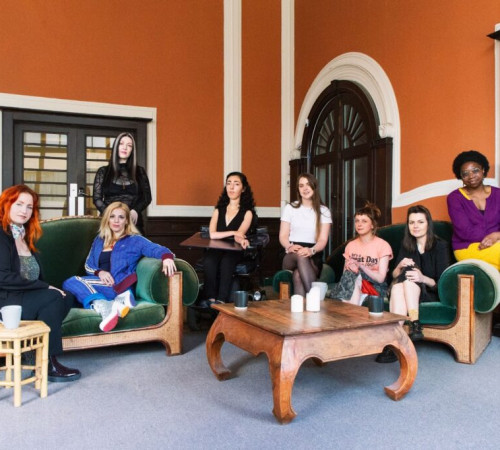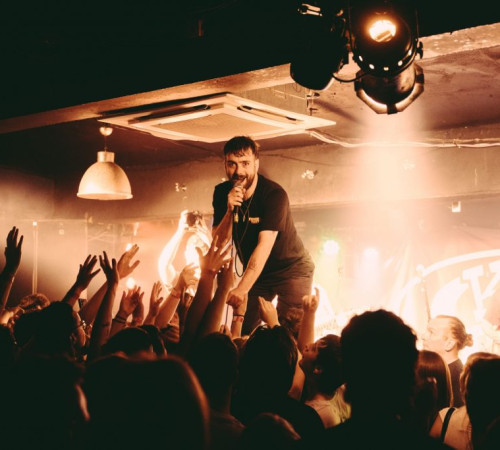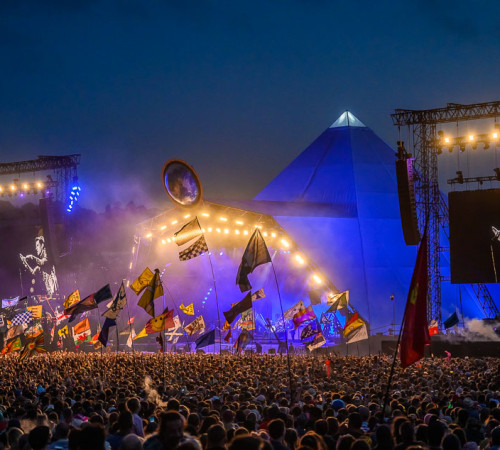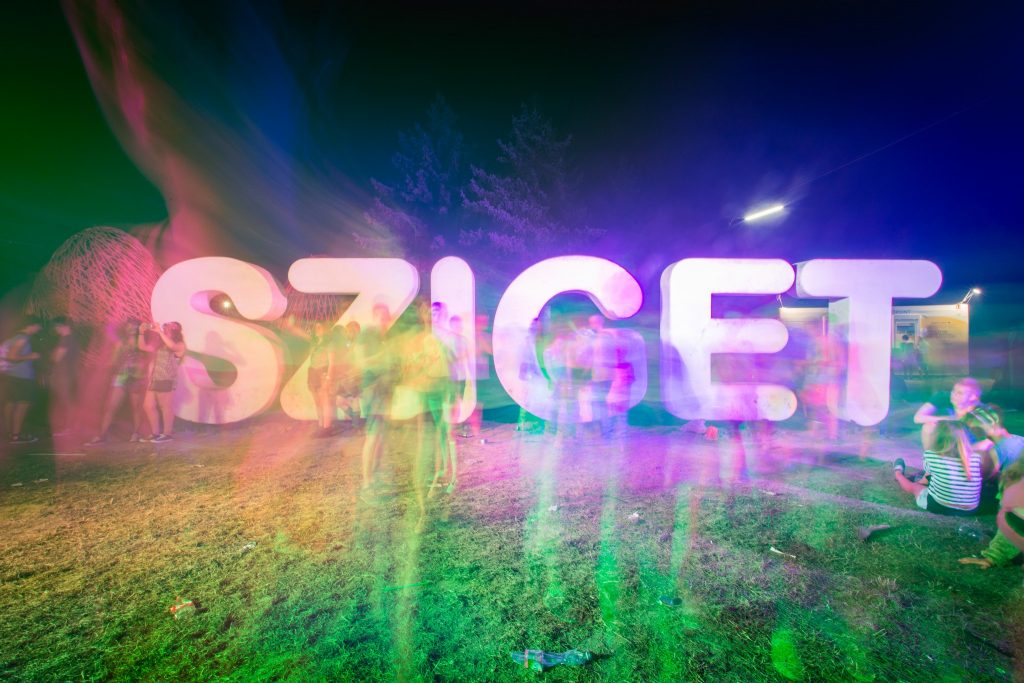
SzemereyBence
THE popularity of music festivals has been steadily rising year on year, and for many it is impossible to think of summer without them. There are countless all around Europe, and each year more pop up. But what exactly does it take to create and hold a huge international music festival? To find out we have gone behind the scenes at one of Europe’s biggest festivals – Sziget Festival in Budapest, Hungary.
It was started in 1993 by a group of ambitious students who were looking to reignite a summer of social activities after the fall of Hungary’s communist system. During the system social programs were encouraged and subsidised by the government, but after ’89 a void appeared. And so the first iteration of the festival was created and at the time was named Diáksziget (student’s island). Since then the festival has grown massively and last year a record 441,000 people attended over the course of the week.
Putting all this together is a mammoth task and mostly achieved by a relatively small team of about 60 people who work throughout the year. Around about the festival time that number swells to something like 6000, as security, volunteers, caterers, artists, police, medical staff, technicians and many more join the ranks to create what is essentially a small city – there is even a post office and a bank. So where to begin with a task this size? We’ll start with the foundation of all music festivals, which is of course, the music itself.
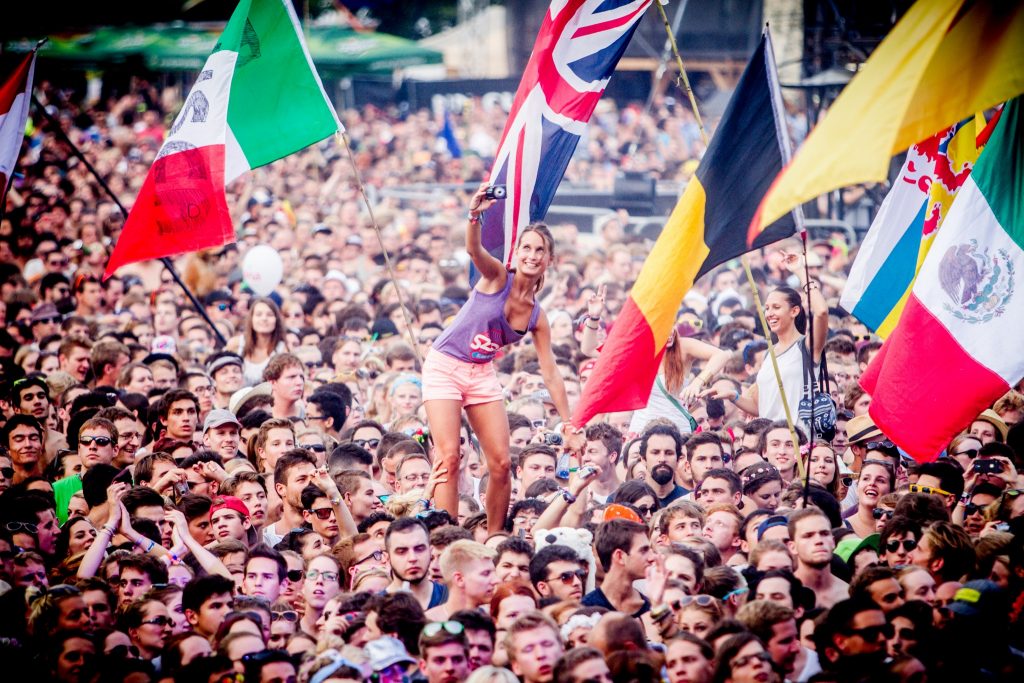
CsudaiSándor
The artists
Unlike some festivals Sziget has an amazingly diverse array of bands and doesn’t stick to just one genre. Over the years everyone from Radiohead to Prince, to David Guetta and Oasis have graced the stage. Tamás Kádár, the current CEO at Sziget stressed the need for a good line-up, however doesn’t think it is the most crucial aspect:
“Of course the line-up is important. However we know our fans can see the bands that play at Sziget at a lot of different places around Europe. So it isn’t just the line-up that must stand out – of course it must be strong and interesting and fresh – but it is the festival that should be special. The festival must be the brand, not the bands.”
He went on to say that securing these big bands has become more tricky in recent years, because playing live shows is now the main form of income for bands. As the sales of physical LP’s has reduced, musicians are relying more and more on playing live, and so when they play festivals they demand more money. Tamás understands this, however he thinks the real problem is not getting the bands, but pleasing them once they agree to play.
“A rider” is an industry word for a set of demands that performers will make – both in terms of hospitality and on the technical side of things. Dániel Benis, the technical operative manager, explained why these are such a chore:
“Once I was working with a booking manager and in each rider that he asked for he put something really weird down. For example he asked for a packet of M&M’s separated by colour. It’s not a joke, it’s a game. If you see that someone in the backstage area will do that, then you know that all the details on the rider will be arranged.”
So booking bands can be expensive and keeping them sweet can be problematic, but for big festivals like Sziget they can at least rely on their prestigious reputation to coax the bands. What about smaller festivals or ones that are just starting out?
“For a new festival it is always hard because you maybe can’t guarantee the money, and you have to have a good introduction. I think you would need someone to introduce you, like a recommendation; even if it is just a person who knows a person.”

Authorisation
On the opposite side of things to the music is the bureaucratic minefield. If you have ever tried to organise a birthday celebration for someone, then you know it can be a huge hassle. Well how about organising a 7 day party with nearly half a million guests?
Basically there are 9 different authorities who you need to go through and complete when you are making an outdoor festival in Hungary: The fire department, the city itself, the police, the sanitation department, sound issues, tents and stages (temporary structures), the park itself (green issues), transportation, and finally the airport – if you are doing a laser show then you must talk to them to see what you can do and when.
If that sounds like a lot of work then Dániel Benis offered some sound advice:
“Preparation and checklists. You can never be too prepared. It is part facility management, part military exercise, and part dreaming. Push all these together and it can work.”
Security
Festivals can seem like a place free from the normal constraints of society; an oasis of liberty and free expression. However those thoughts are for the punters, while in the background safety and security are high priorities. Sziget itself employs around 1000 security staff each year and that’s just the beginning. There are also 14 ambulances on site – the total amount of ambulances in the Budapest region is 30, so Sziget’s allocation is almost 50%. This year too, as Dániel explained, there is an added element with the political climate in Europe slightly unstable:
“This year will be a huge challenge relating to recent terror issues in Europe, so it is going to take a lot more time and preparation. There aren’t 100% solutions; you can just do your best. We do a lot behind the scenes with security cameras and undercover agents will work and be here.”
Marketing and PR
Sziget invites roughly 600 members of international press, and the same number of Hungarian press each year. That’s a lot of coverage. Interestingly though, even for a festival of Sziget’s size they still rely on an old-fashioned promotional technique, as Zsuzsa Kövér, the international PR and press coordinator explained:
“Sziget is like a word of mouth festival, so it might not be listed on every festival guide but everyone knows about it and everyone wants to come. So we want bloggers and smaller media publications to come to the festival, we even have a girl who is very active on snapchat and twitter.”
Dealing with the press is one thing though, but what about the hundreds of thousands of festival-goers who flock to Hungary’s capital? In many ways the most important part of it all is to satisfy the customer and to make sure they have a good time. Zsuzsa described the challenges involved in making sure that all the information about the festival is perfectly clear and understandable:
“I have to get into the mind of someone who has never been to Sziget before, or probably never even been to Hungary. So when he or she asks ‘how will I get to the festival site?’ I have to think about all the steps – starting from getting off the plane at the airport.”
On the marketing side of things you might think that it would take care of itself as Sziget is a huge name and a big-hitter on the European festival scene. But there are always challenges, even at the top level, as Tamás Kádár pointed out:
“A few years ago when the economy was bad we had some difficulty. Because Sziget is an international festival there were many Hungarian companies who didn’t want to pay international prices to advertise to people who didn’t live in Hungary. For the international marketing companies it was a local thing, and they didn’t want to advertise to Hungarians.”
Spirit of Sziget
Known as the ‘island of freedom’ Sziget is a unique festival. The location is simply stunning, surrounded by nature and the huge Danube River giving it a magical and secluded atmosphere. It is full of colour and has a wealth of oddities mixed in with the usual music festival experience. It was summed up neatly by Zsuzsa who said:
“If you’re a lawyer by day you can be an Easter bunny at Sziget. You can be whoever you want to be and you can do whatever you want to do, and that’s the freedom that Sziget gives.”
This article has merely brushed the surface in terms of what it takes to put on a festival like this. The effort and organisation that goes on is mind-boggling, and certainly my respect for people who make festivals has increased considerably. So the next time you’re soaking up the sun in front of a stage, drinking a beer and basking in that festival feeling, spare a thought for all those behind the scenes that have put it all together.
Look out for part 2 of this article which will show the building of the festival
Sziget festival takes place between 10 – 17 August this year. For more information checkout their website here.



